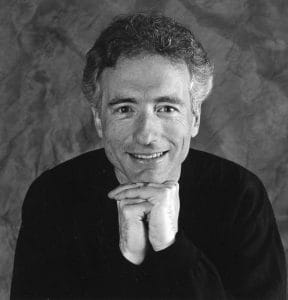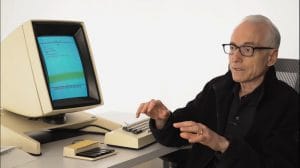A computer scientist, Tesler’s death was covered by many publications, every one of which summarized his life as the guy who “invented” computer-based “copy & paste” functionality. Absolutely he developed that common real-world function in the virtual realm, adding one thing not easily available in the physical: repeated perfect pastes. But Tesler was much more than that. He grew up in New York, and in 1961 graduated from the Bronx High School of Science, where a teacher guided him to check out computers. Between high school and college he learned to program them. He started at Stanford University at age 16. He worked for awhile at Stanford’s Artificial Intelligence Laboratory, where he wrote Pub, a “document compiler” program to print manuals from simple text files, which is now considered as one of the first programs to use a “markup language” — special characters to denote, for instance, bold and italics.

Tesler turned down a 1971 offer from Xerox’s Palo Alto Research Laboratory because he wanted to work with personal computers — almost unheard of in 1971, but in 1973 accepted a job offer there from Alan Kay; Xerox was working on its Alto computer, the first stand-alone one-person computer that was built around a graphical user interface. For that, Tesler wrote a word processing program (Gypsy), as well as Smalltalk, the first dynamic object-oriented programming language. Gypsy was the first to have copy & paste — which he developed with colleague Tim Mott. While working on the Xerox NoteTaker, a 35-pound (16kg) portable computer, Tesler programmed the Ethernet driver for it — the first time that was done in software, rather than hardware. He is also apparently the person who coined “user friendly” and “what you see is what you get” — what’s on the screen mirrors what will be printed on paper, though someone else shortened the latter to “WYSIWYG”. Tesler was well known for promoting “modeless” computing: the ability to do things on a computer without having to “switch modes” (from, say, reading to editing: he wanted to just click the cursor into the text and edit).

But Tesler’s largest contribution to computing in general started when he was assigned in 1979 to give a tour of Xerox PARC to a visitor: Steve Jobs, a few years after he and Steve Wozniak started Apple Computer. Tesler demonstrated much of what PARC was working on, including the Alto computer, controlled by a new thing called a mouse, as well as Gypsy, Smalltalk, and more. Jobs was so excited he came back for a second visit — and in 1980 hired Tesler away to work at Apple. Tesler was happy to find someone excited about personal computing: Xerox still considered itself a copier company and wasn’t particularly interested in developing PARC’s innovations into consumer products. At Apple, he helped with the development of the Lisa computer, which then led to the Macintosh; it was Tesler’s “no modes” philosophy that led Apple’s mouse to only have one button. He eventually rose to be the company’s Chief Scientist, but left in 1997 and was later hired by another upcoming tech company: Amazon, where he worked on improving the company’s web site interface; then Yahoo, where he was Vice President of User Experience (but left there because the company was “too unfocused”). He spent most of the rest of his career as a consultant, helping Silicon Valley companies improve user interfaces: he wanted computers to be easier to use. Lawrence Gordon Tesler died at his home in Portola Valley on February 16, apparently due to complications from a bicycle accident. He was 74.
